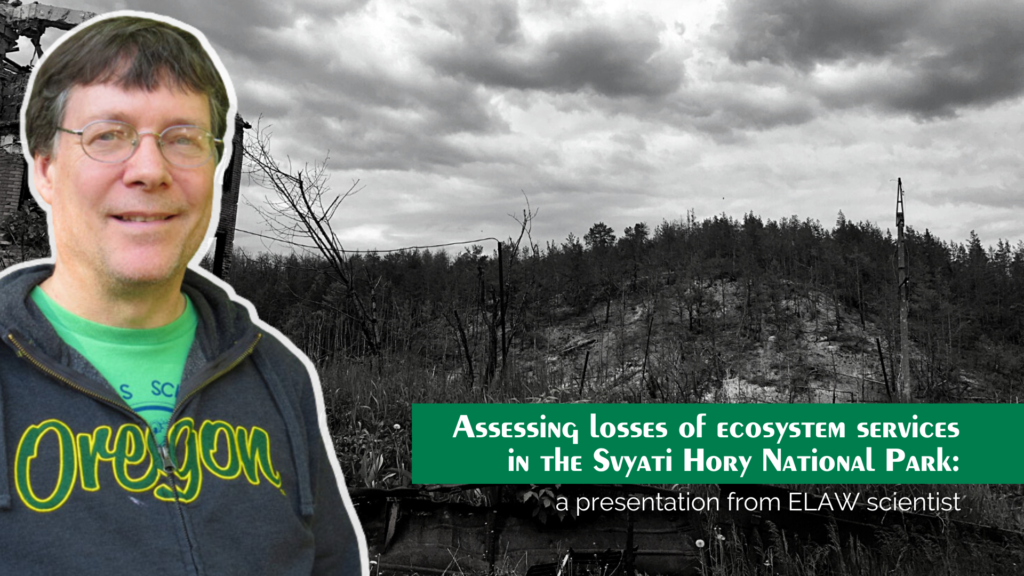Participants of EPL’s summer school and Eco-Hacathon had a privilege to listen to a presentation by Dr. Mark Cherniak, Science Program Director at Environmental Law Alliance Worldwide (ELAW).
Dr. Cherniak spoke about the losses of ecosystem services of forest biotopes in the Svyati Hory National Park: a practical case.
The presenter began by defining some important terms. The first one is “ecosystem services.” One definition is that ecosystem services refer to the benefits and contributions that ecosystems provide to human well-being. They are the various ways in which ecosystems, such as forests, wetlands, and oceans, support and enhance our lives, livelihoods, and the functioning of the economy. Ecosystem services include tangible goods like food, water, and timber, as well as intangible benefits like climate regulation, water purification, pollination, and recreational opportunities. They are essential for our survival, quality of life, and sustainable development.
Second, Dr. Cherniak continued by noting that there are several systems or methods in use for determining the value of ecosystem services. These systems do not all agree on which biotopes provide which ecosystem services. What is clear is that no system can fully take into account the myriad of ways that healthy forests contribute to human well-being.
Third, the speaker noted that there are several methods that economists use to assign a monetary value for ecosystem services.
Fourth, the use of different systems results in different monetary values being assigned to ecosystem services provided by forests. For example, under the EU system, forests are estimated to provide ecosystem services of roughly $680 per hectare per year in 2022 dollars. However, under the FEMA system, forests are estimated to provide ecosystem services of roughly $5500 per hectare per year in 2022 dollars.
Fifth, all systems that assign monetary values to ecosystem services provided by forests include a size and time component. That is, an amount of money per unit area of forest per unit of time, often a number of years.
This makes it important to understand how long it would take forests destroyed by Russia’s war on Ukraine to regenerate. In 2019, scientists with the Ukrainian Research Institute of Forestry and Forest Melioration in Kharkiv published a study that analyzed over 284,000 hectares of forests in the Left-bank Forest-Steppe zone of Ukraine (Kyiv, Poltava, Sumy, Kharkiv, Cherkasy and Chernihiv Regions). These scientists observed that the natural regeneration period for oak forests that were cleared was 50-80 years. The study states (on page 21): “The age of maturity for the best natural regeneration of oak stands is 50–80 years and such stands make up more than 45% of the total area.” Sixty-five years (halfway between 50-80 years for oak forests in Ukraine to reach maturity) might be a reasonable value for the expected number of years it would take the forests of the Svyati Hori national park that were destroyed by Russia to regenerate.
Sixth and finally, combining the information above allows us in the practical case to estimate the damages that Russia should be held accountable for the destruction of forests within Svyati Hory National Park.
Under the European system, assuming a 65-year period for the natural regeneration of oak forest lost to fire, then the monetary value of the destruction of each hectare of oak forest in Svyati Hory National Park caused by Russia’s war on Ukraine is $44,200 per hectare.
Under the FEMA system, again assuming a 65-year period for the natural regeneration of oak forest lost to fire, then the monetary value of the destruction of each hectare of oak forest in Svyati Hory National Park caused by Russia’s war on Ukraine is $357,760 per hectare.


